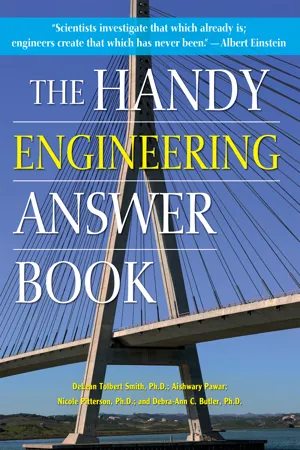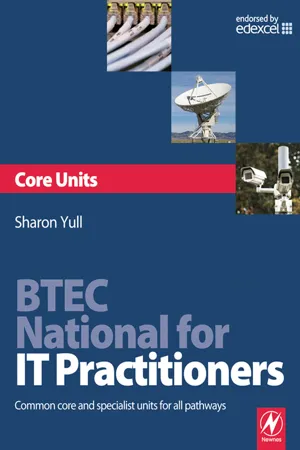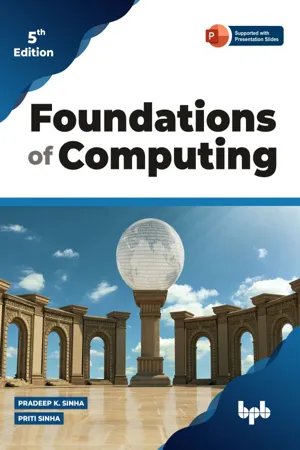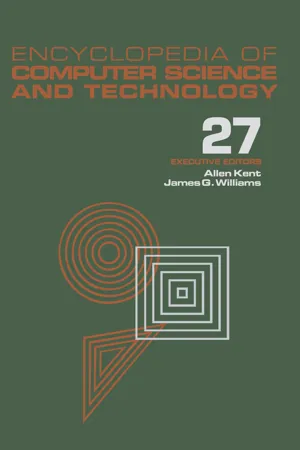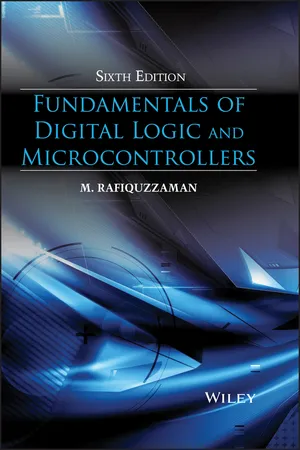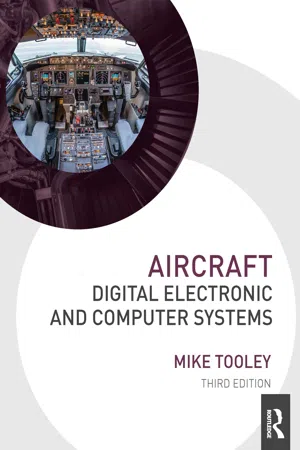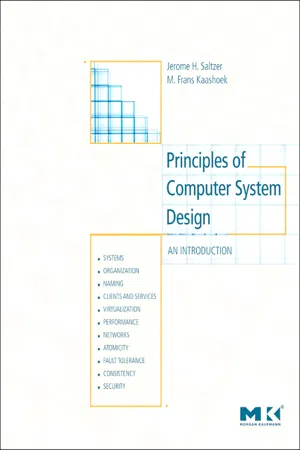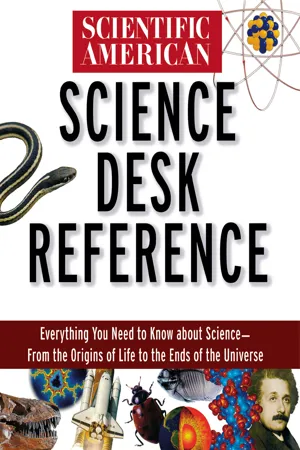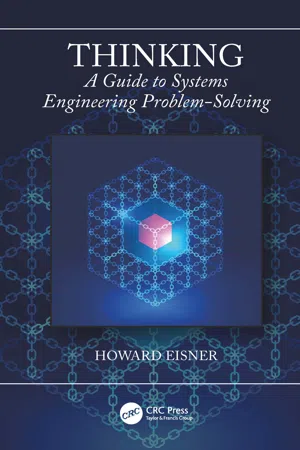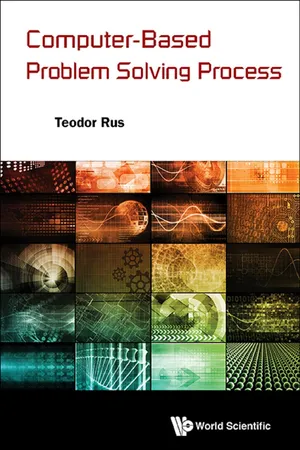Computer Science
Computer Systems
Computer systems refer to the combination of hardware and software components that work together to perform various tasks. These systems can range from personal computers to large-scale data centers and are designed to process, store, and communicate information. Understanding computer systems is essential for developing and maintaining software applications and managing technology infrastructure.
Written by Perlego with AI-assistance
Related key terms
12 Key excerpts on "Computer Systems"
- eBook - ePub
- DeLean Tolbert Smith, Aishwary Pawar, Nicole P. Pitterson, Debra-Ann C. Butler(Authors)
- 2022(Publication Date)
- Visible Ink Press(Publisher)
Frances Elizabeth “Fran” Allen (1932–2020) was a pioneer in computer engineering. She was born in Peru, New York, to a father who was a farmer and a mother who was a schoolteacher. She was inspired by her math teacher to become a math teacher. She earned her first degree in mathematics with a minor in physics from New York State College for Teachers (now the State University of New York at Albany). She then worked as a high school mathematics teacher. She hoped to become fully certified as a teacher and went to the University of Michigan, earning her master’s degree in mathematics. During her studies, she took computing courses and learned how to program. Based on her experience, IBM offered her a position as a programmer, and she joined the company in 1957. She had the job of learning the FORTRAN programming language and then teaching IBM research scientists how to use it. As she prepared for this training, she read the source code for the FORTRAN compiler. This launched the direction of the rest of her career. She was a leader in compiler development and computing.A computer scientist for IBM and winner of the Turing Award, Frances Allen pioneered the field of optimizing compilers.What are Computer Systems?A computer system is a combination of unique devices (hardware) and programs (software) designed to perform a specific function. A typical computer system consists of hardware devices that perform input, output, processing, and storage functions.•Input devices are used to enter data or instructions into the computer so that it can perform specific tasks. Some examples of input devices are keyboards, mice, trackballs, scanners, light pens, modems, card readers, and microphones.•Output devices are used to display information that is the direct result of what the computer does. Some examples of output devices are monitors, printers, plotters, speakers, and earphones.DID YOU KNOW?How do computer scientists use math to solve problems?Mathematics is a very important aspect of computer science. Since computer science is concerned with the principles of using computers to process information at extremely high and fast levels as well as designing hardware and programming software, computer scientists must have a highly functioning knowledge of algebra, statistics, calculus, and binary and discrete mathematics.•Processing devices: The central processing unit (CPU) is the main and most important portion of a computer, which takes the data and instructions inputted into the computer, performs a set of manipulations, and returns an output.•Storage devices are used to store data and information that are produced by the computer or needed by the computer to perform certain functions, such as program files. Some examples of storage devices include internal and external hard drives, USB drives, and cloud storage. - eBook - ePub
- Sharon Yull(Author)
- 2009(Publication Date)
- Routledge(Publisher)
Courtesy of iStockphoto, dlewis33, Image# 4473509Chapter 2 Computer SystemsComputer Systems are crucial in supporting a large majority of day-to-day organisational activities. Computer Systems are quite complex in that they are based on a framework of integrated components that work together to provide a dynamic communications environment. These components can be broken down into hardware, software and peripheral items that individually have a set function such as storage, memory or speed etc. Together however, these individual components provide an integrated approach to addressing the growing business and communication needs of a multitude of end users.T he requirement to understand how computers work and how they interact and communicate with hardware and software components, and also the ability to diagnose, configure, install and provide routine maintenance is ever growing in today’s competitive IT society. The ability to demonstrate knowledge and skill in these areas is desirable to employers and as such has generated the need for these topics to be embedded within qualifications at all levels of learning.This chapter will introduce you to a range of concepts that will help you to develop an understanding about hardware and software components and considerations for use and selection. In addition, this chapter will provide information and guidance on how to carry out routine computer maintenance. - eBook - ePub
Foundations of Computing
Essential for Computing Studies, Profession And Entrance Examinations - 5th Edition
- Pradeep K. Sinha, Priti Sinha(Authors)
- 2022(Publication Date)
- BPB Publications(Publisher)
Chapter 10Operating Systems
An operating system is an important component of a computer system. This chapter introduces the concepts related to operating systems and shows how this system software helps in the overall operation and usage of a computer system.BASIC CONCEPTS
What is an Operating System?
Operating system (often referred to as OS) is an integrated set of programs that controls the resources (CPU, memory, I/O devices, etc.) of a computer system and provides its users with an interface or virtual machine that is easier to use than the bare machine. According to this definition, the two primary objectives of an operating system are:- Make a computer system easier to use. A computer system consists of one or more processors, main memory, and many types of I/O devices such as disks, tapes, terminals, network interfaces, etc. Writing programs for using these hardware resources correctly and efficiently is a difficult job, requiring in-depth knowledge of functioning of these resources. Hence, to make Computer Systems usable by a large number of users, we need some mechanism to shield the programmers and other users from the complexity of hardware resources. This is achieved by putting a layer of software on top of the bare hardware. This layer of software manages all hardware resources of the system, and presents the users with an interface or virtual machine that is easier, safer, and efficient to program and use. It is called the operating system.
Figure 10.1 shows the logical architecture of a computer system. As shown, operating system layer surrounds hardware resources. Then a layer of other system software (such as compilers, editors, utilities, etc.) and a set of application software (such as commercial data processing applications, scientific and engineering applications, entertainment and educational applications, etc.) surrounds operating system layer. Finally, end users view the computer system in terms of the user interfaces of the application software.Figure 10.1.
- eBook - ePub
Information Systems
What Every Business Student Needs to Know, Second Edition
- Efrem G. Mallach(Author)
- 2020(Publication Date)
- CRC Press(Publisher)
Chapter 4 ) should drive hardware choices.- 2 Hardware evolves quickly. You must distinguish between basic principles and how products you’re familiar with happen to work.
- 3 Effective management of hardware requires an enterprise hardware architecture. Individual hardware purchases should conform to it.
- 4 Selecting the right hardware requires understanding what that hardware will be used for.
3.1 Computer Structure
As you read in Chapter 1 , computer hardware is one component of an information system. This term refers to the physical parts of a computer: those you interact with, such as mouse, keyboard and display, and its electronic and mechanical components.As you also read there, a system is a collection of components that interact with a purpose. Computer hardware is a system. We can break it down as in Figure 3.1 .FIGURE 3.1 System-level diagram of computer hardware.The elements of Figure 3.1 are systems, too. A mechanical keyboard consists of an enclosure, a few dozen plastic keys, springs and electrical contacts under each, and a way to tell a computer when a switch closes. Many of those can be broken down further.Data enters computers via input devices. Keyboards are one. However, computers get more data from pointing devices such as a trackpad or mouse. We don’t think of sending data when we move a mouse, but when a mouse moves, it sends data. That data doesn’t end up in documents, but it helps us create them. Network connections (see Chapter 6 ) can also be input devices.Output devices ship data to whomever, or whatever, needs it. Screens, printers, and speakers are familiar output devices, but many computers send output to other devices. The bill dispenser in an ATM is an output device. So are the gates that rise to let you leave a parking lot after you pay and the fuel injector in your car’s engine. In today’s cars, your foot doesn’t control fuel flow. It sends input to a computer. That computer calculates when to send fuel to the cylinders, and how much. - eBook - ePub
Encyclopedia of Computer Science and Technology
Volume 27 - Supplement 12: Artificial Intelligence and ADA to Systems Integration: Concepts: Methods, and Tools
- Allen Kent, James G. Williams, Allen Kent, James G. Williams(Authors)
- 2021(Publication Date)
- CRC Press(Publisher)
SYSTEMS INTEGRATION: CONCEPTS, METHODS, AND TOOLSINTRODUCTION
Computer and information science and technology have managed problems in widely different applications, providing the services for users in diverse areas of research, development, and industry. In the quest for correct and comprehensive solutions, new concepts, methodologies, and technologies have been invented, tested, and applied in order to meet the demand for well-designed systems. However, "well-designed" often has a very restricted frame of reference, addressing only the needs and attributes of a single application. System design concepts, methods, and tools usually focus on improving the process of development and maintenance, without paying much attention to the system's possibility of subsequent integration in a larger system context. This produces a situation where the resulting product functions according to a specification, targeted to define a project with predefined boundaries. The underlying technologies, system architectures, and semantic concepts are chosen to fit these restricted goals.The result is that one ends up with a set of applications which is designed to perform individual component tasks without even acknowledging the presence of other applications. However, sooner or later, strategic planning and organizational requirements lead to the need to use data and services among different systems, and, consequently, to coordinate and integrate these systems. Coping with this objective usually makes it clear that a system is more than the simple sum of its parts. An integrated system, even if it is composed of existing applications, has its own characteristics and therefore its design and implementation have to be planned and conducted carefully.Systems integration can be achieved either by gluing the already existing parts together or, preferably, by applying an integrated top-down approach, thus coordinating all integration and development activities in a common framework. To be able to handle the different possible forms of systems integration, it is necessary to identify the different active and passive components of the systems, their dependencies, and their uses. The "passive" components provide the infrastructure of the system (e.g., transport of data) which is used by the "active" components which comprise the functionality of the system by implementing a given application. The management of integrative processes can be discussed on the basis of such a framework of classified system parts. - M. Rafiquzzaman(Author)
- 2014(Publication Date)
- Wiley(Publisher)
Chapter 1 Introduction to Digital SystemsDigital systems are designed to store, process, and communicate information in digital form. They are found in a wide range of applications, including process control, communication systems, digital instruments, and consumer products. The digital computer, more commonly called the computer, is an example of a typical digital system.A computer manipulates information in digital, or more precisely, binary form. A binary number has only two discrete values — zero or one. Each of these discrete values is represented by the OFF and ON status of an electronic switch called a transistor. All computers, therefore, only understand binary numbers. Any decimal number (base 10, with ten digits from 0 to 9) can be represented by a binary number (base 2, with digits 0 and 1).The basic blocks of a computer are the central processing unit (CPU), the memory, and the input/output (I/O). The CPU of the computer is basically the same as the brain of a human. Computer memory is conceptually similar to human memory. A question asked to a human is analogous to entering a program into the computer using an input device such as the keyboard, and answering the question by the human is similar in concept to outputting the result required by the program to a computer output device such as the printer. The main difference is that human beings can think independently, whereas computers can only answer questions that they are programmed for. Computer hardware refers to components of a computer such as memory, CPU, transistors, nuts and bolts. Programs can perform a specific task such as addition if the computer has an electronic circuit capable of adding two numbers. Programmers cannot change these electronic circuits but can perform tasks on them using instructions.Computer software, on the other hand, consists of a collection of programs. Programs contain instructions and data for performing a specific task. These programs, written using any programming language such as C, must be translated into binary prior to execution by the computer. This is because the computer only understands binary numbers. Therefore, a translator for converting such a program into binary is necessary. Hence, a translator program called the compiler- eBook - ePub
Microsoft Office 2013/365 and Beyond
Computer Concepts and Applications
- Theodor Richardson, Charles Thies(Authors)
- 2015(Publication Date)
- Mercury Learning and Information(Publisher)
Introduction to Computer ConceptsIN THIS CHAPTERThis chapter is an introduction to foundational computer concepts. You will learn how to perform basic tasks on a computer and identify hardware interfaces on your machine. You will also learn about the essential components that allow a computer to function. Once you have completed the chapter, you will be able to:Discuss modern Computer SystemsChoose and identify an adequate computer specific to your needs based on software requirementsExplain how a computer worksIdentify input and output devicesIdentify modern operating systemsDemonstrate basic tasks on commonly used operating systems1.1 WHAT IS A COMPUTER?Computers are widespread throughout today’s world, whether for home or business use or in a handheld device. All of these devices are centered on the fundamental need to manage, store, and use information. On a personal level, you probably have information that is important to you and that you need to access on a regular basis. This can range from phone numbers and addresses of family and friends to account information for a variety of services.Organizations have the same needs when it comes to information, as they must constantly innovate to maintain a competitive edge. Organizations have two very important assets that contribute to research and development, which in turn leads to increased profitability. The first important asset is the intellectual capital the organization maintains. Intellectual capital is the knowledge derived from ideas and innovation from its personnel. As a result, organizations develop large amounts of data that must be processed into useful information. To do this, they use the organization’s information systems infrastructure, which is the second important asset an organization maintains. In this chapter, you will learn about the foundational component that helps to create, process, and store the information people need to operate as businesses or individuals in the world today: the modern computer. - eBook - ePub
- Mike Tooley(Author)
- 2022(Publication Date)
- Routledge(Publisher)
Chapter 6 ComputersDOI: 10.1201/9781003215516-66.1 Computer Systems
The basic components of a computer system are shown in Figure 6.1 . The main components are:Figure 6.1 Basic components of a computer system- a central processing unit (CPU);
- a memory, comprising both ‘read/write’ and ‘read only’ devices (commonly called RAM and ROM, respectively);
- a means of providing input and output (I/O) (for example, a keypad for input and a display for output).
In a microprocessor system the functions of the CPU are provided by a single very large-scale integrated (VLSI) microprocessor chip (see Chapter 7 ). This chip is equivalent to many thousands of individual transistors.Semiconductor devices are also used to provide the read/write and read-only memory. Strictly speaking, both types of memory permit ‘random access’ since any item of data can be retrieved with equal ease regardless of its actual location within the memory. Despite this, the term ‘RAM’ has become synonymous with semiconductor read/write memory.The basic components of the system (CPU, RAM, ROM and I/O) are linked together using a multiple-wire connecting system known as a bus (see Figure 6.1 ). Three different buses are present; these are:- the address bus used to specify memory locations;
- the data bus on which data is transferred between devices; and
- the control bus which provides timing and control signals throughout the system.
The number of individual lines present within the address bus and data bus depends upon the particular microprocessor employed. Signals on all lines, no matter whether they are used for address, data or control, can exist in only two basic states: logic 0 (low) or logic 1 (high). Data and addresses are represented by binary numbers (a sequence of 1s and 0s) that appear respectively on the data and address bus.Some basic microprocessors designed for control and instrumentation applications have an 8-bit data bus and a 16-bit address bus. More sophisticated processors can operate with as many as 64 or 128 bits at a time. - eBook - ePub
Principles of Computer System Design
An Introduction
- Jerome H. Saltzer, M. Frans Kaashoek(Authors)
- 2009(Publication Date)
- Morgan Kaufmann(Publisher)
operating system is a set of programs and libraries that make it easy for computer users and programmers to do their job. In the early days of computers, operating systems were simple programs that assisted operators of computers (at that time the only users who interacted with a computer directly), which is why they are called operating systems.Today operating systems come in many flavors and differ in the functions they provide. The operating system for the simplest computers, such as that for a microwave oven, may comprise just a library that hides hardware details in order to make it easier for application programmers to develop applications. Personal computers, on the other hand, ship with operating systems that contain tens of millions of lines of code. These operating systems allow several people to use the same computer; permit users to control which information is shared and with whom; can run many programs at the same time while keeping them from interfering with one another; provide sophisticated user interfaces, Internet access, file systems, backup and archive applications, device drivers for the many possible hardware gadgets on a personal computer, and a wide range of abstractions to simplify the job of application programmers, and so on.Operating systems also offer an interesting case study of system design. They are evolving rapidly because of new requirements. Their designers face a continuous struggle to control their complexity. Some modern operating systems have interfaces consisting of thousands of procedures, and their implementations are so complex that it is a challenge to make them work reliably.This book has much more to say about operating systems, starting in Section 5.1.1 , where it begins development of a minimal model operating system.The exact division of labor between the hardware layer and the software layers is an engineering trade-off and a topic of considerable debate between hardware and software designers. In principle, every software module can be implemented in hardware. Similarly, most hardware modules can also be implemented in software, except for a few foundational components such as transistors and wires. It is surprisingly difficult to state a generic principle for how to decide between an implementation in hardware or software. Cost, performance, flexibility, convenience, and usage patterns are among the factors that are part of the trade-off, but for each individual function they may be weighted differently. Rather than trying to invent a principle, we discuss the trade-off between hardware and software in the context of specific functions as they come up. - eBook - ePub
- (Author)
- 2008(Publication Date)
- Trade Paper Press(Publisher)
standards any agreed system or protocol that helps different pieces of software or different computers to work together. If computers are to communicate over a network, standards must be coordinated: the World Wide Web, for example, works because everybody who uses it agrees to follow the same conventions, such as using HTML to build Web documents. Other standards, like SMTP—the procedure for sending e-mail—exist to make cross-platform communication (for example between a UNIX machine and a Macintosh) possible. Bodies involved with this process include: the Internet Architecture Board, the W3 Consortium, and the International Standards Organization.systems analysis the investigation of a business activity or clerical procedure, with a view to deciding if and how it can be computerized. The analyst discusses the existing procedures with the people involved, observes the flow of data through the business, and draws up an outline specification of the required computer system. The next step is systems design.systems design the detailed design of an applications package. The designer breaks the system down into component programs, and designs the required input forms, screen layouts, and printouts. Systems design forms a link between systems analysis and programming.teletext broadcast system of displaying information on a television screen. The information—typically about news items, entertainment, sport, and finance—is constantly updated. Teletext is a form of videotext, pioneered in Britain by the British Broadcasting Corporation (BBC) with Ceefax and by Independent Television with Teletext.terminal - eBook - ePub
Thinking
A Guide to Systems Engineering Problem-Solving
- Howard Eisner(Author)
- 2019(Publication Date)
- CRC Press(Publisher)
chapter threeSystems and thinking
This chapter is about “systems”—what they are, thinking about them, and the relationship between thinking and systems.What is a system?
A short but useful definition of a system is simply [1 ]: it is an assemblage of elements or components that are interconnected so as to harmoniously perform one or more functions, to serve one or more purposes. We expand upon that definition and recognize that a system can also be a procedure for accomplishing a task. And finally, a system can be one or more bodies of knowledge that explain how various parts of nature or man-made systems work. Generally, there are two classes of systems, namely, man-made and natural systems. We will be looking at both types of systems in this chapter.These systems involve everyday activities and are necessary to sustain ordinary life on a day-to-day basis. A partial list of such systems is provided as follows. • The food growing and distribution system • The e-mail system • The telephone system • The gas distribution system • The drug distribution system • The transportation system • The automobile sales and repair system • The department store system • The hardware distribution system • The school system • The banking system • Business information systemsMan-made systems
An enormous amount of effort is devoted to building, operating, and maintaining these systems, and by and large, we put a lot of person hours into them. They are generally not scientific, but meat-and-potatoes systems that we need every day. But to keep them up and running efficiently, a lot of thought goes into them every day.Natural systems
Many folks have been exploring and thinking about natural systems, and for a long time, and to our great benefit. Here are a dozen examples: - eBook - ePub
- Teodor Rus(Author)
- 2015(Publication Date)
- WSPC(Publisher)
Chapter 5Hardware SystemThis part of the book presents the architecture and functionality of the hardware of a computer platform as an ad-hoc system. We do this using the systematic approach for ah-hoc system construction developed in the Chapter3 , which iterates the following actions:(1)Define the major behavior of the system; (2)Identify system components performing the system behavior; (3)Specify the functional behavior of system components; (4)Develop an (algorithmic) expression of the system in terms of components at (2) performing the actions specified t (3); until system performs according to its major behavior specified at (1).5.1Major Behavior of a Hardware SystemA hardware system is seen here as an information processing tool that performs the following operations: receive information from the environment, store information for later use, process information stored in the system, transmit information into the environment. The components of a hardware system that perform these operations are:
Index pages curate the most relevant extracts from our library of academic textbooks. They’ve been created using an in-house natural language model (NLM), each adding context and meaning to key research topics.
